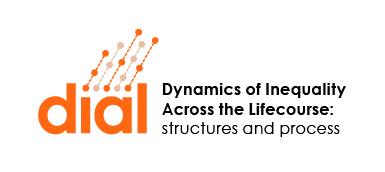This study investigates associations between trajectories of children’s vocabulary development and subsequent behavioral and emotional difficulties via two potential mediating mechanisms; literacy and peer problems. Nationally representative data from 4,983 Australian children were used to examine trajectories of receptive vocabulary (4–5, 6–7, and 8–9 years) and hyperactivity-inattention, conduct problems and emotional symptoms (8–9, 10–11, 12–13, 14–15 years), … Read more
Vocabulary development and trajectories of behavioral and emotional difficulties via academic ability and peer problems
Association of Slight to Mild Hearing Loss With Behavioral Problems and School Performance in Children
Importance Children with severe hearing loss are known to have more behavioral problems and may perform worse at school than children without. Few large-scale studies of slight to mild hearing loss are available. Objective To examine the relevance of slight to mild hearing loss by studying its association with behavioral problems and school performance. Design, … Read more
Association of proximal elements of social disadvantage with children’s language development at 2 years: an analysis of data from the Children in Focus (CiF) sample from the ALSPAC birth cohort
Background An association between social disadvantage and early language development is commonly reported in the literature, but less attention has been paid to the way that different aspects of social disadvantage affect both expressive and receptive language in the first 2 years of life. Aims To examine the contributions of gender, parental report of early … Read more
Like parents, like children. Does the stratification of education systems moderate the direct effect of origins on destinations?
Using data from the European Social Survey, this study asks if selective education systems can moderate the effects of our origins on later success in the labor market while controlling for education. It finds no effect, regardless of the extent to which selection is based on the student’s abilities. The sample consists of nearly 40,000 … Read more
The role of partnering and assortative mating for income inequality: The case of Finland, 1991–2014
This paper considers why, contrary to expectations, relationships between people with similar backgrounds, especially similar levels of education, hasn’t done more to increase income inequality. It finds that what matters more for inequality is a combination of background characteristics and a consideration of who partners in the first place. The research uses Finnish register data … Read more
Bidirectional associations of childhood stuttering with behavior and temperament
Purpose: Behavior and temperament (e.g., emotional reactivity, self-regulation) have been considered relevant to stuttering and its developmental course, but the direction of this relation is still unknown. Knowledge of behavior difficulties and temperament in childhood stuttering can improve screening and intervention. The current study examined both directions of the relationship between stuttering and behavior difficulties … Read more
Parental age in relation to offspring’s neurodevelopment
Objective: Advanced parenthood increases the risk of severe neurodevelopmental disorders like autism, Down syndrome and schizophrenia. Does advanced parenthood also negatively impact offspring’s general neurodevelopment? Method: We analyzed child-, father-, mother- and teacher-rated attention-problems (N= 38,024), and standardized measures of intelligence (N = 10,273) and educational achievement (N = 17,522) of children from four Dutch population-based cohorts. The … Read more
Social disparities in the vocabulary of 2-year-old children and the mediating effect of language-stimulating interaction behavior
It is well documented that children’s language skills already vary by socioeconomic status by the time they are about 2-3 years old. In addition, study results demonstrate that the frequency of language-stimulating interaction behavior – as an important aspect of the proximal familial learning environment – significantly predicts children’s later language skills. However, it is … Read more
What impacts early language skills? Effects of social disparities and different process characteristics of the home learning environment in the first 2 years
It is well documented that the language skills of preschool children differ substantially and that these differences are highly predictive of their later academic success and achievements. Especially in the early phases of children’s lives, the importance of different structural and process characteristics of the home learning environment (HLE) has been emphasized and research results … Read more
Gestational age, parent education, and education in adulthood
BACKGROUND Adults born preterm (<37 weeks) have lower educational attainment than those born term. Whether this relationship is modified by family factors such as socioeconomic background is, however, less well known. We investigated whether the relationship between gestational age and educational attainment in adulthood differed according to parents’ educational level in 4 Nordic countries. METHODS … Read more
